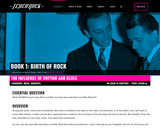
The subject of this lesson is the music of which Fats Domino speaks: the R&B of the pre-Rock and Roll era.
- Subject:
- Arts and Humanities
- Performing Arts
- Material Type:
- Full Course
- Provider:
- TeachRock
- Date Added:
- 12/13/2019

The subject of this lesson is the music of which Fats Domino speaks: the R&B of the pre-Rock and Roll era.
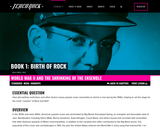
This lesson explores the transition from the Big Band era of the 1930s and 40s to the rise of smaller ensembles and featured singers in the years following World War II. Students will analyze and draw conclusions from primary sources including wartime rationing posters, archival photographs, and Billboard chart lists. Video clips featuring the music of Glenn Miller, Frank Sinatra, Nat King Cole, and other artists provide students with visual and musical evidence to discuss factors that led to the shrinking of popular music ensembles and the emergence of genres that inspired Rock and Roll artists in the 1950s.
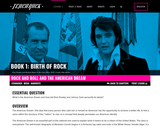
In this lesson, students will explore the persistence of the American Dream by juxtaposing the writings of Horatio Alger Jr. and John Steinbeck with the artistic output of Elvis and Cash. If the American Dream as an ideology has always been a balance between myth and reality, these artists, and Rock and Roll culture more generally, gave the myth something real. Through a survey of literature, album art, songs, television news reports, film, and other materials, students will examine how these artists became symbols of the American Dream for their many fans.
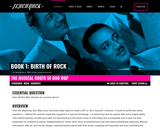
Doo Wop's musical and social roots point to a long history of vocal harmony in American culture, particularly in African-American communities. Social singing provided entertainment in barbershops, bars, schools, churches, theaters, and other communal spaces. Some of the musical precedents students will consider in this lesson include the barbershop quartets that flourished from the 1890s through World War I; the Pop vocal groups such as the Mills Brothers that topped the charts in the 1920s, 30s, and 40s; and the Gospel singers who made harmonizing a spiritual practice throughout the early twentieth century.
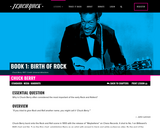
In this lesson, students will analyze several of the elements that combined to make Berry such an important and influential artist. They will examine his pioneering guitar riffs, his carefully crafted lyrics that spoke directly to the emerging market of white, middle-class teen listeners, his blend of R&B and Country and Western influences, and his energetic performance style, which helped pave the way for a generation of guitar-playing showmen.

Through a comparative analysis of magazine advertisements, graphs, and statistical data, students will discuss the factors that led to the surge in guitar sales in postwar America. Live performances by Jerry Lee Lewis and the Beatles serve to highlight the role of piano versus that of the electric guitar in defining the look and the sound of the Rock and Roll band.
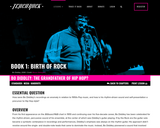
In this lesson, students explore the particularities of Bo Diddley's music, contrasting it with other artists of the late 1940s and early 50s, specifically John Lee Hooker's "Boogie Chillen," Chuck Berry's "School Days" and The Chordettes' "Mr. Sandman." Through comparative listening, students will determine elements of Bo Diddley's style, including his emphasis on rhythm and lyrical content, and examine how his recordings compared with the popular music of his peers. In groups, students watch 1980s-era footage of Grandmaster Flash and the Furious Five, engaging in a guided discussion to draw conclusions as to whether they believe Bo Diddley can be viewed as a precursor to Hip Hop.

In this lesson, students will listen to recordings that illustrate how guitar distortion evolved into a defining sound in Rock and Roll. Students will examine key events in the development of the effect and use a techtool to compare and contrast the sound of a guitar when distortion is in the electronic signal path and when it is not.
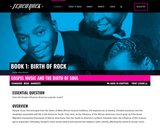
In this lesson, students will trace the influence of Gospel music on early Rock and Roll, particularly in R&B's embrace of such key musical features as the call-and-response and in the uses of complex rhythms. The class will make side-by-side comparisons of Gospel and early Rock and Roll songs, as well as work in groups to chart the overall influence of Gospel on a range of different popular music genres.
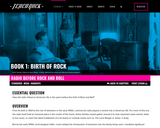
From its birth in 1920 to the rise of television in the early 1950s, commercial radio played a central role in American life. For much of this era, the radio itself held an honored place in the center of the home. Entire families would gather around it to hear important news events, listen to live music, or catch the latest installment of a hit drama or comedy series such as The Lone Ranger or Amos n Andy. But by the early 1950s, technological shifts most notably the introduction of television into the family living room heralded significant changes in the American people's relationship with radio. The rise of smaller, portable radios meant that individuals could now listen virtually any time or place. The growing popularity of television rendered radio drama and comedy series nearly obsolete; listeners were less satisfied with merely listening to stories on radio when they could see them unfold before their eyes on television.
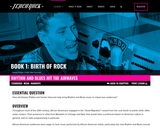
This lesson will focus on two of those DJs: Memphis's Dewey Phillips, whose popular show "Red Hot and Blue" frequently featured music by African-American artists, and Los Angeles's Hunter Hancock, widely regarded as the first DJ in the western part of the country to regularly play R&B on the air. Reaching both black and white audiences, these pioneering DJs played an integral role in bringing African-American music into the mainstream, a process that lay at the heart of the soon-to-come Rock and Roll revolution.
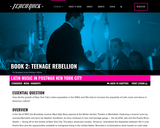
This lesson focuses on Latin American immigration to New York City during the late 1940s and 50s and the effect it had on popular culture. Students investigate a 1940 U.S. Department of Agriculture film about Puerto Rico, a graph containing immigration data, an interview with bandleader Tito Puente, an array of clips featuring Latin dance music, and both mainstream Pop songs and Broadway showtunes revealing the "Latin tinge." As students examine these resources, they will consider and discuss the roles Latino artists played in bringing a Latin feel to American popular culture.

In this lesson, students will compare Valens' version of "La Bamba" to a traditional version of the song, and examine how Valens was able to successfully incorporate a Latin feel into a mainstream Rock and Roll recording. They will further evaluate why the song became influential, paving the way for later artists to develop and explore the genre of Latino Rock, and how it illustrates Rock and Roll's capacity to absorb multiple influences and redefine itself.
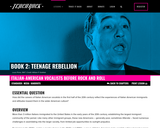
Students will investigate what these singers, from Sinatra to Tony Bennett and Dean Martin, brought to popular song, and why their particular style of singing made such an impression on the American public.
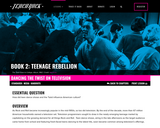
In this lesson, students will investigate the vast cultural impact on American culture of teen dance shows in general, and the Twist in particular.
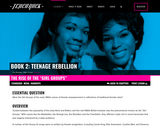
In this lesson, students will evaluate what the emergence of the Girl Groups says about the roles of girls and women in the early 1960s, as the nation sat on the threshold of a new Women's Rights movement that would challenge traditional female roles. In 1963, Betty Friedan published The Feminine Mystique, widely considered a milestone in the emerging feminist movement and it came at the peak of the Girl Groups' popularity. Did the success of the Girl Groups signal a new female empowerment, under which girls and women could finally come out from the shadows of Rock and Roll and tell the world what was on their minds? Or did the very labels "Girl Group" and "girl singer" and the focus of so many of their songs on the search for the ideal man simply reflect the traditional domestic roles of women as wives and mothers?
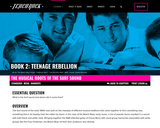
In this lesson students will investigate the different elements of the Beach Boys' Surf sound by visiting four listening stations and identifying some essential elements of their early music. These elements include rich vocal harmonies, a production aesthetic influenced by Phil Spector's "Wall of Sound" recordings, Chuck Berry-inspired electric guitar riffs, and the liberal use of "reverb" effects facilitated by technical innovations to Fender amplifiers in the early 1960s.
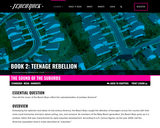
In this lesson, students will analyze the rise of the suburbs, and the ways in which the Beach Boys made music that evoked this important demographic trend.
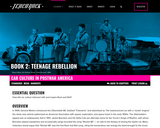
Using a selection of songs, statistics, television spots, archival films, and magazine advertisements, students investigate how the postwar resurgence of the U.S. automotive industry coincided with the rise of the teenager, the two intersecting in Rock and Roll culture.
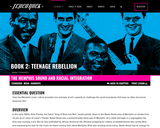
In this lesson, students embark on a "walking tour" of Memphis, using the city as a case study through which to view complex race relations and integration issues that affected communities across the U.S. While plotting points of historical interest on a map, students consider how artists such as Elvis, the Mar-Keys, and Booker T. and the MGs resisted social norms through their music and performances. Listening to oral history from Stax owner Jim Stewart, students explore how an integrated record label operated in the middle of a segregated community and was able to create a unique and powerful Soul sound that signaled a shift in race relations in America.